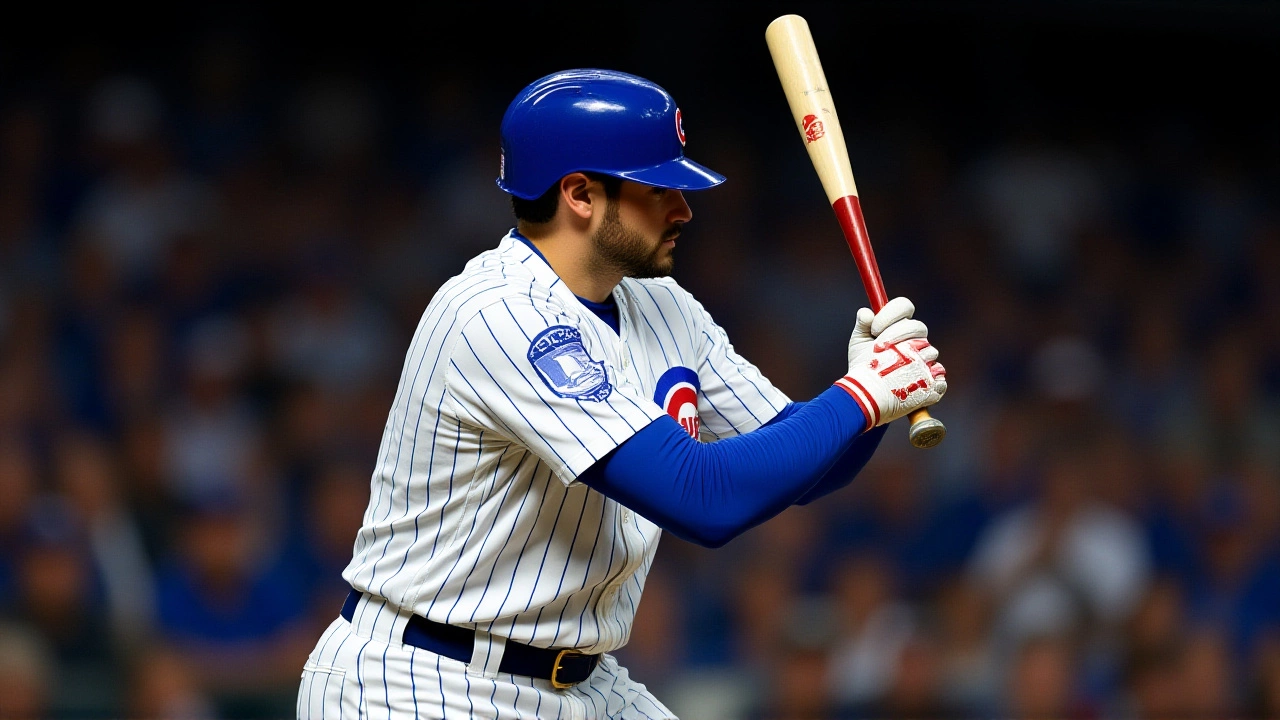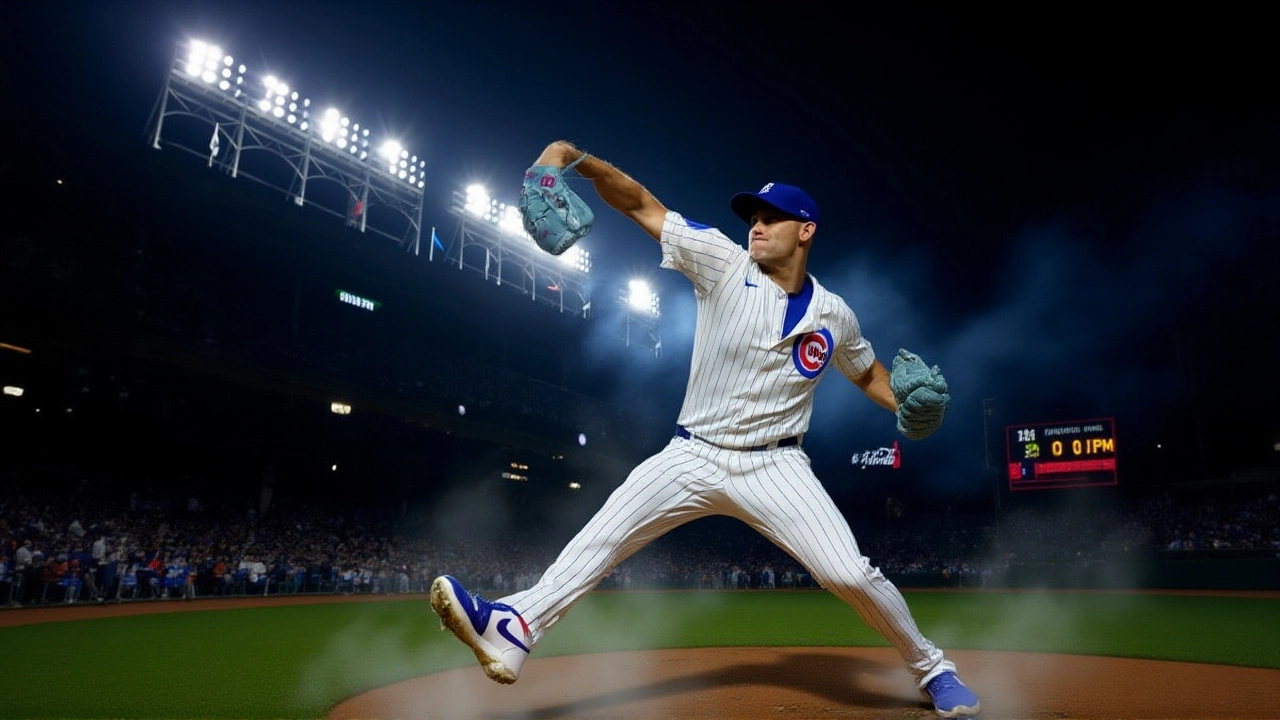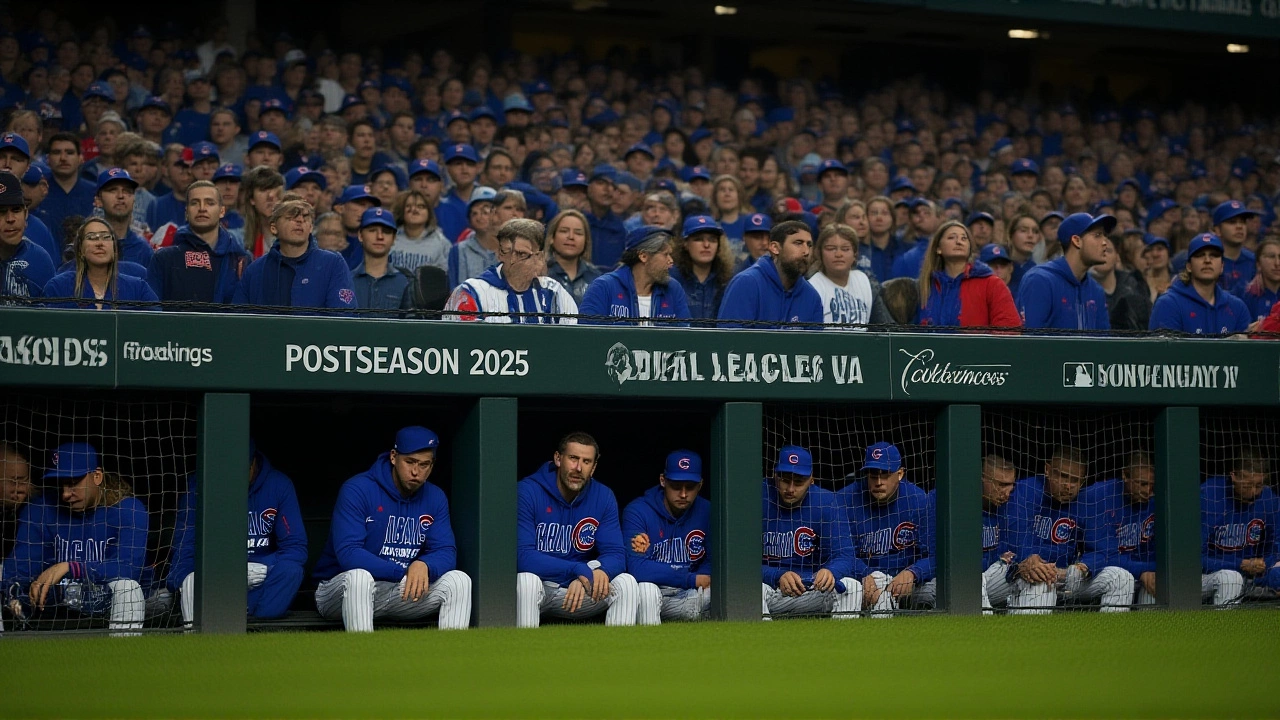When Chicago Cubs and Milwaukee Brewers meet for a winner‑take‑all Game 5 of the National League Division SeriesAmerican Family Field on Saturday, the stakes feel as high as they get. The series is tied 2‑2, and the victor will march on to face the Los Angeles Dodgers in the NL Championship. Both clubs have leaned heavily on their bullpens, flipping the traditional starter‑reliever script in a move forced by injuries and early‑inning fireworks.
Series at a Glance
The NLDS has been a showcase of offense before the fifth inning. In the first four games, the two teams combined for a staggering 21 first‑inning runs – a figure that eclipses the average for any recent Division Series. Chicago has managed a first‑inning home run in every contest, a quirky pattern that has made fans check the scoreboard every time the leadoff batter steps into the box. Meanwhile, Milwaukee’s early starts have been a mixed bag, buoyed by big hits but hampered by an injury‑ridden rotation.
Having split the first four games, both managers have a clear mandate: preserve the bullpen while trying to keep the offense humming. The only way to do that is by turning relievers into de facto openers. And that’s exactly what you’ll see on the mound Saturday night.
Bullpen‑First Game‑Plan
Milwaukee announced on X that Trevor Megill, All‑Star closer of the Brewers will start the game. Megill, 31, posted a 6‑3 record with a tidy 2.49 ERA and 30 saves during the regular season, only to miss the final stretch with a shoulder strain. His role now is to eat the first inning or two, then hand the ball to rookie right‑hander Jacob Misiorowski, who threw three scoreless frames in Game 2.
Across the way, the Cubs have gone with left‑hander Drew Pomeranz, a high‑leverage reliever and former Brewer, as their opener. Pomeranz has been flawless, delivering five perfect innings across the Wild Card Series and the NLDS so far. Like Megill, he’s not expected to go deep – the plan is to trade the early innings for fresh arms later.
Both managers admitted the strategy is “born of necessity.” Brewers’ rotation is thin after starters Brandon Woodruff and Logan Henderson landed on the injured list. Cubs manager Craig Counsell is counting on a deep, versatile bullpen that includes right‑handers Daniel Palencia and Andrew Kittredge, left‑hander Caleb Thielbar, and veteran Jameson Taillon, who whispered he’d be ready if the need arose.
Who’s Pitching When?
On Milwaukee’s side, after Megill’s brief opening stint, Misiorowski is slated to take over, followed by Nick Mears and left‑hander Jared Koenig. All three logged innings in Games 1‑3, but rested in Game 4, making them fresh for the deciding night. The bullpen’s depth is a surprise strength – the Brewers have a mix of veteran reliability and youthful vigor, a combo that could swing the series if the offense stalls.
The Cubs’ rotation of relievers is even more layered. After Pomeranz’s opener, the plan is to cascade through Palencia, Kittredge, and Keller for multi‑inning pushes, with Soroka, Civale and Ben Brown on standby. If the game stretches into the later innings, the club can also tap Taillon, who worked four solid innings in Game 3 and said he’d gladly pitch again.
Such a relay‑race is unusual for a postseason, but it underscores how far both clubs have been forced to dig. The pitch‑by‑pitch battle will likely hinge on who can keep the ball in the park while their bullpen still has gas in the tank.

Lineups: Familiar Faces, New Stakes
Chicago is sticking with the same nine that delivered the last two wins: Michael Busch at first, Nico Hoerner at second, Kyle Tucker as designated hitter (returning from a left‑calf strain), Seiya Suzuki in right field, Ian Happ in left, Carson Kelly catching, Pete Crow‑Armstrong in center, Dansby Swanson at short, and Matt Shaw at third. The continuity has paid off; the Cubs have logged a home run in the first inning of every game, and that early boost is a big part of why they forced a Game 5.
Milwaukee’s lineup mirrors the same consistency: left‑fielder Jackson Chourio, second‑baseman Brice Turang, catcher William Contreras, designated hitter Christian Yelich, first‑baseman Andrew Vaughn, right‑fielder Sal Frelick, third‑baseman Caleb Durbin, center‑fielder Blake Perkins, and shortstop Joey Ortiz. Manager Pat Murphy kept the order unchanged, confident the same construction that sparked early runs will do it again.
Historical Angles and What’s at Stake
Under the current 2‑2‑1 format, a team that drops the first two games on the road has only a 14% chance (5 of 35) to claw back to a decisive Game 5. The Brewers find themselves in that exact spot: they raced to a 2‑0 series lead, only to watch the Cubs steal both home games. If Milwaukee can snap the pattern, they become the sixth team ever to reverse that early deficit.
For Chicago, a win would mark the franchise’s fourth elimination‑game triumph in a single postseason – a record that would eclipse any prior Cubs postseason run. It would also set them up against the Dodgers, a team that’s already proven itself in the playoffs and will be waiting in Los Angeles for a rescheduled series that could shift the entire NL balance.
Beyond the immediate excitement, the game is a case study in how modern baseball adapts to health crises. Injuries to Woodruff, Henderson, and even Megill’s late‑season flare forced both clubs to re‑think the traditional starter‑centric model. The outcome may influence how teams approach bullpen usage in future postseasons, especially in a league where offense is trending upward.

Looking Ahead: Scenarios and Betting Odds
Baseball analysts are splitting the odds almost evenly, with a slight edge to the Cubs due to their early‑inning prowess. If the Brewers manage to push a run beyond the first inning, they could flip the momentum and force a late‑inning marathon. Conversely, if Chicago repeats its habit of an opening‑frame home run, the Brewers will need an immediate answer from their bullpen, which could stretch its depth.
Regardless of who walks out of American Family Field with a win, the winner will carry a huge psychological lift into the NLCS. The Dodgers will be fresh, riding high from a dominant NL West campaign, and they’ll be looking for a team that can match their offensive firepower. In short, this Game 5 is a crucible – the heat of it will shape the National League’s postseason narrative for weeks to come.
Frequently Asked Questions
How does the bullpen strategy affect the Cubs' chances?
By using relievers as openers, the Cubs keep fresh arms for later innings, which is crucial after four games of early scoring. If their bullpen can hold the Brewers after the first frame, Chicago’s potent offense can take advantage, significantly boosting their win probability.
What historical precedents exist for teams overcoming a 0‑2 road loss?
Only five teams have turned a 0‑2 road deficit into a Game 5 win under the current format. The Brewers would join a short list that includes the 2019 Nationals and the 2020 Astros, highlighting how rare and momentum‑shifting such a comeback is.
Which player has the biggest impact on the game?
Trevor Megill’s performance as the Brewers’ opener sets the tone; a strong first inning could neutralize Chicago’s early power. Conversely, Drew Pomeranz’s ability to keep the Cubs’ lineup honest gives Chicago a chance to build an early lead.
What are the implications for the NLCS if the Cubs win?
A Cubs victory would send a Chicago team that thrives on early runs into a series against the Los Angeles Dodgers, who boast a deep lineup and ace pitching. Chicago would need to sustain its offensive tempo while managing a battered bullpen against a veteran Dodgers staff.
